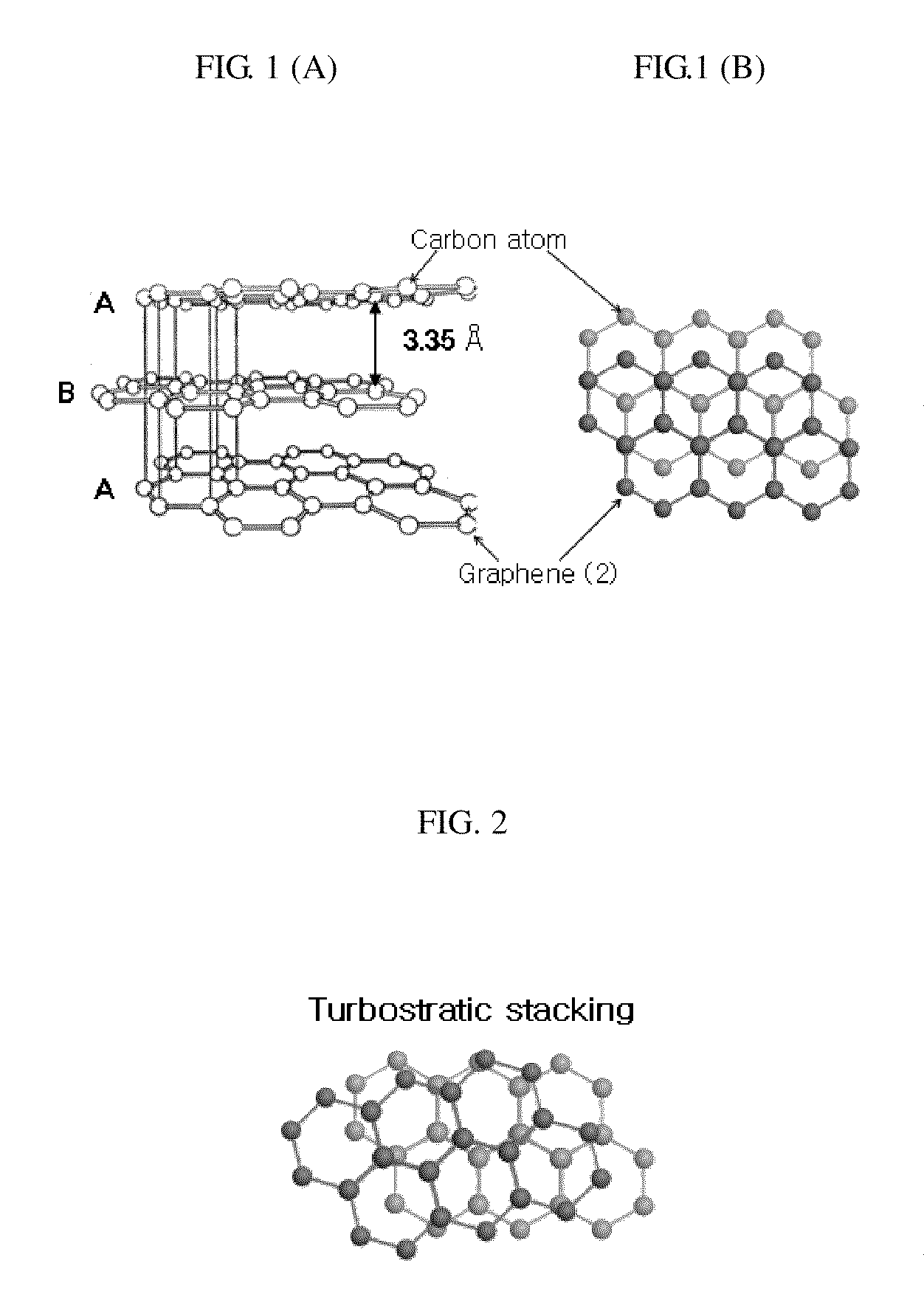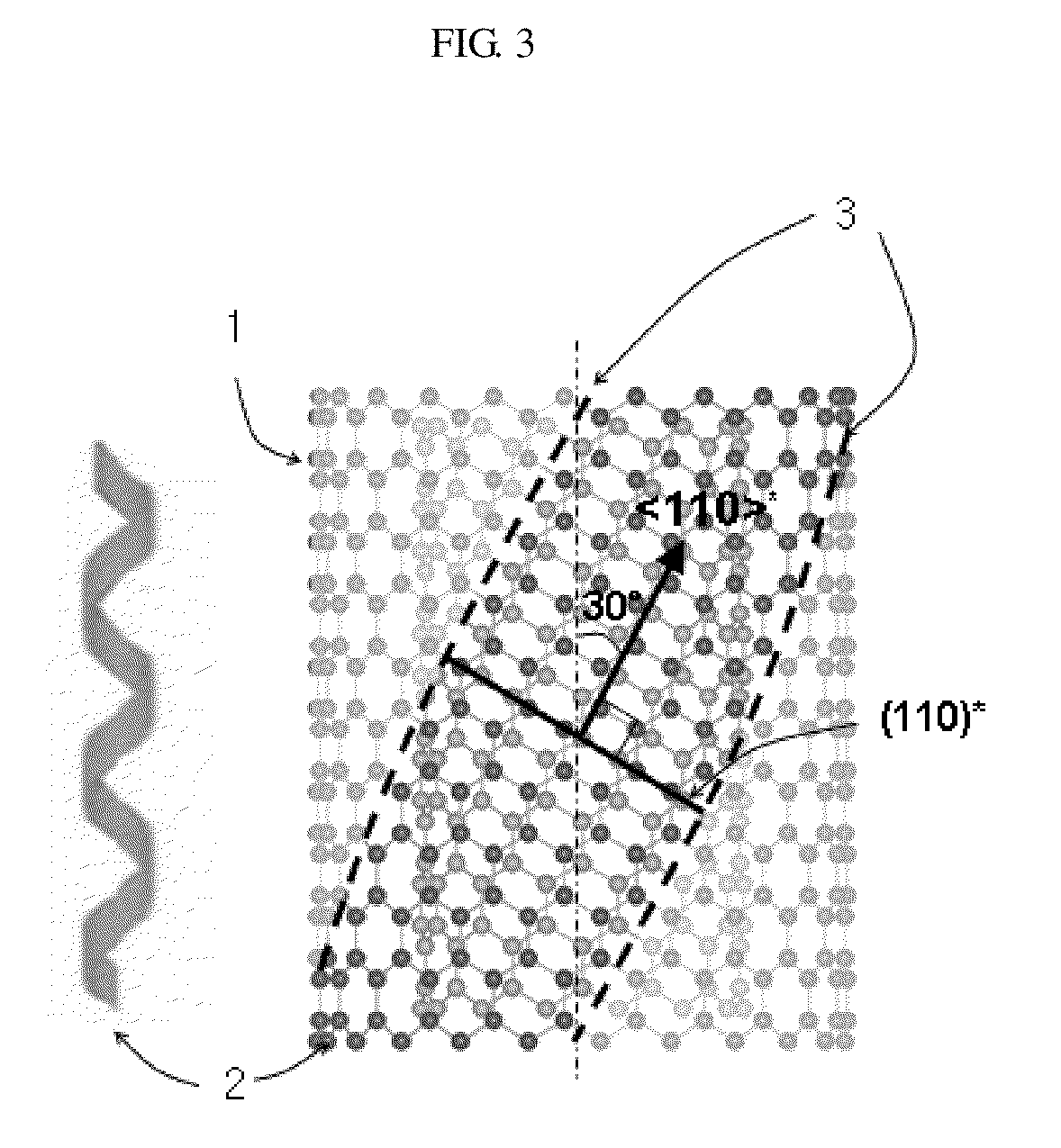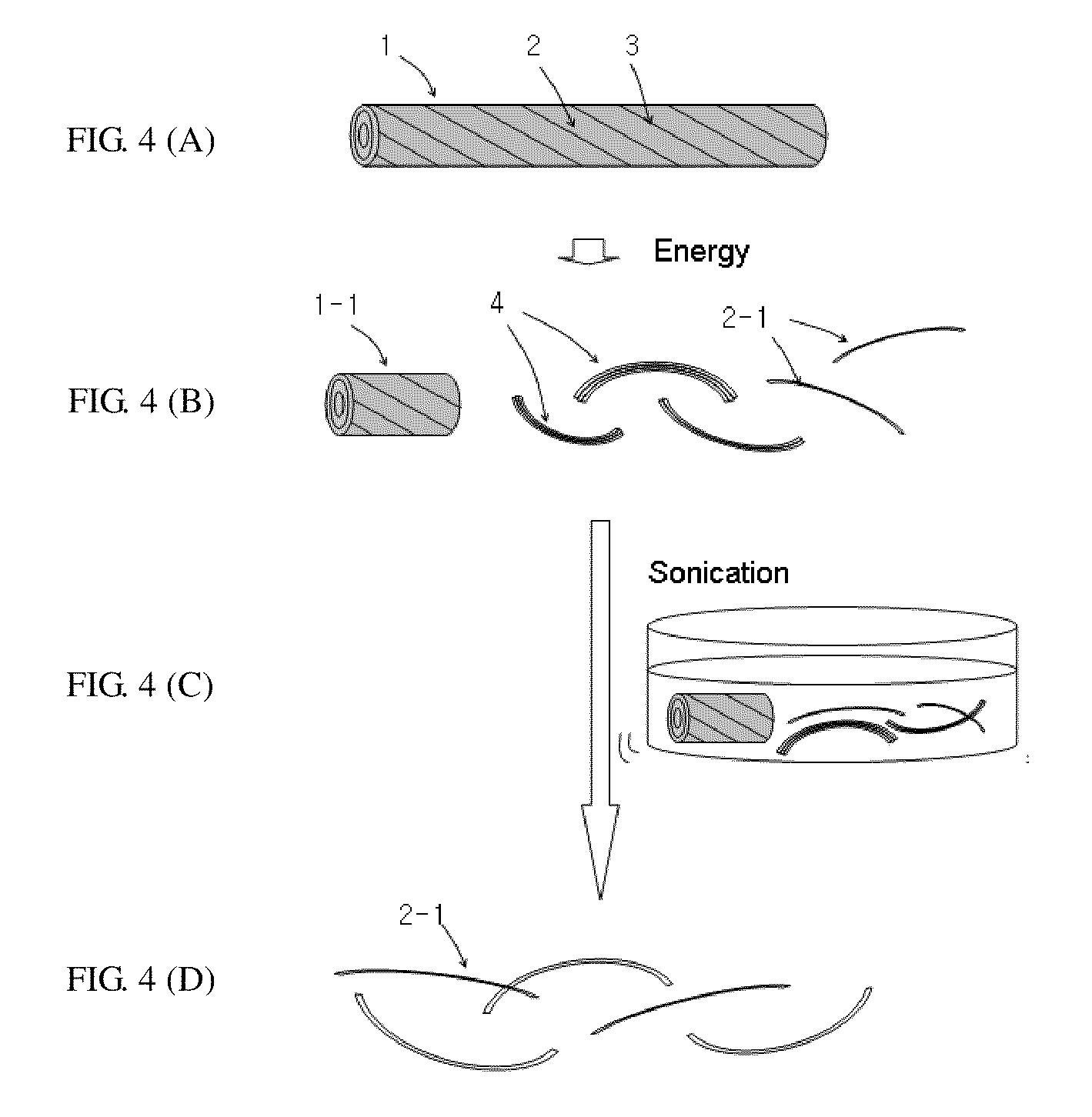Method for preparing graphene ribbons
a graphene ribbon and ribbon technology, applied in the field of graphene ribbon preparation, can solve the problems of inability to obtain graphene by such efforts and too small yield
- Summary
- Abstract
- Description
- Claims
- Application Information
AI Technical Summary
Benefits of technology
Problems solved by technology
Method used
Image
Examples
embodiment 1
Preferred Embodiment 1
[0039]Graphene ribbons were prepared by using a graphitic nanomaterial that graphene helices are stacked in an AA′ manner (similar to MW CNTs). Here, the graphite nano material has an average outer diameter of 20 nm (outer diameter distribution: 2˜50 nm), an average inner diameter of 3˜5 nm (inner diameter distribution: 1˜10 nm), and a length of 2˜3 μm. The sample was passed through a two-roller mill 50 times. This shortened it into short material ˜200 nm in length. Then, the processed sample was made to undergo a hydrophilic treatment, and then was immersed into water to penetrate water into the tube. Then, the short and water containing tubules were maintained at a temperature ˜10° C. for one hour, and then were melted. After a sonication (in alcohol) for 10 minutes, obtained were graphene ribbons having a width of about ˜5 nm and a length of about ˜200 nm (thickness of about 4 Å).
embodiment 2
Preferred Embodiment 2
[0040]The same tube-type of graphitic nano material as that of the preferred embodiment 1 was passed through a two-roller mill 100 times, thereby having a length decreased into about 100 nm or less. Then, the sample was made to undergo a sonication process to be dried, obtained were graphene ribbons having a width of about ˜5 nm and a length of about ˜100 nm.
embodiment 3
Preferred Embodiment 3
[0041]The same graphite nano material as that of the preferred embodiment 1 was milled for two hours using a spex ball milling apparatus. As an observation result for the milled sample by using a scanning electron microscopy (SEM), tubular materials were not observed. And, as an X-ray analysis result, the characteristic peaks of (002), (100), (004), and (110) of the AA′ stacked crystal gradually disappeared as the milling time increased (refer to FIG. 8). This means that the tube-type of AA′ graphene stacked body has been decomposed into graphene ribbons (C) through to stacked graphene ribbons (B) with the milling time as shown in FIGS. 9(A)-(C). For one hour milling graphitic ribbons coexist with bi- or single-layer graphene (B). With a further one hour milling, the graphitic ribbons were converted to graphene nanoribbons which are approximately 10 nanometres in length (C). Stacked graphene fringes are partially observed. Their average interplanar distance was...
PUM
 Login to View More
Login to View More Abstract
Description
Claims
Application Information
 Login to View More
Login to View More - R&D
- Intellectual Property
- Life Sciences
- Materials
- Tech Scout
- Unparalleled Data Quality
- Higher Quality Content
- 60% Fewer Hallucinations
Browse by: Latest US Patents, China's latest patents, Technical Efficacy Thesaurus, Application Domain, Technology Topic, Popular Technical Reports.
© 2025 PatSnap. All rights reserved.Legal|Privacy policy|Modern Slavery Act Transparency Statement|Sitemap|About US| Contact US: help@patsnap.com



